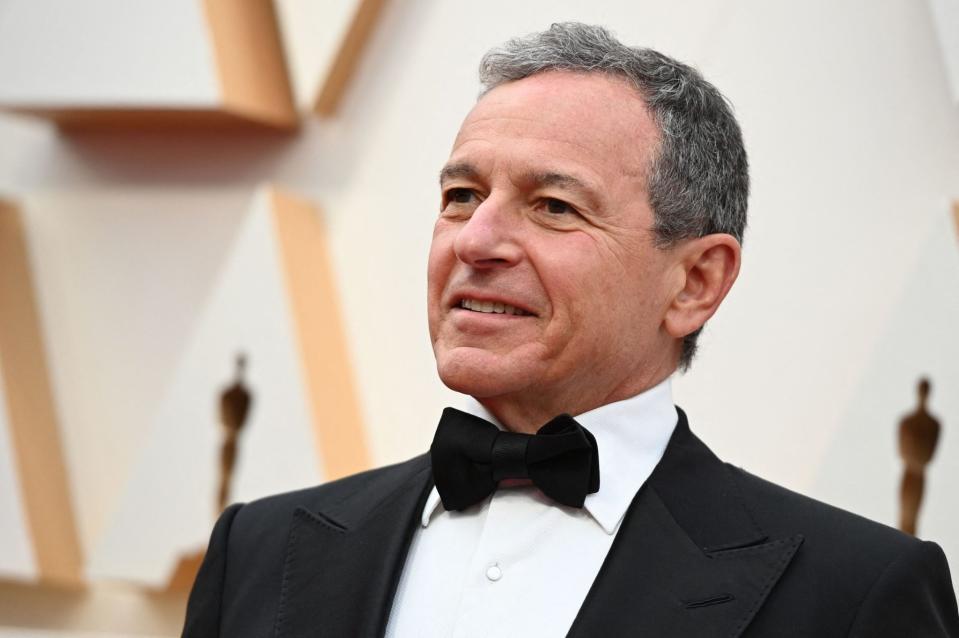Bob Iger’s pitch for a virtual Disney World sounds a lot like Mark Zuckerberg’s metaverse—but is better poised for success, analyst says

A virtual world where users can play games, shop, and interact with each other—sound familiar? And no, it’s not the metaverse.
Disney on Wednesday announced a $1.5 billion investment in Fortnite maker Epic Games that is supposed to lead to the creation of a virtual Disney universe, as well as Disney characters in the hit game Fortnite.
A major factor behind CEO Bob Iger’s decision to partner with Epic is the massive number of young people playing video games, he said during Disney’s earnings call on Wednesday. More than 90% of Gen Alpha and Gen Z, which includes anyone born after 1996, played games during a six-month period last year, according to a report by gaming data company NewZoo. Moreover, more than half of that group, plus millennials, spent money on games on a monthly basis last year and are more likely to buy from brands featured in games, the report shows.
“When I saw the amount of time they were spending in terms of total media screen time on video games, it was stunning to me,” Iger said. “The conclusion I reached was: We have to be there, and we have to be there as soon as we possibly can.”
Iger described the planned virtual Disney World as something that lives next to Fortnite and is completely interconnected with it. Characters spanning Disney’s intellectual property—including from Pixar, Marvel, Star Wars, and Avatar—would appear in the universe. Users will be able to play games that Disney produces, create their own games, watch short-form content, and shop for digital goods, Iger said. He also floated the idea of distributing long-form Disney content within the online ecosystem.
Disney did not provide a release date for any of its planned products with Epic. Its stock rose 6% following its earnings report, to $105.79 in after-hours trading, after reporting better-than-expected profits and forecasting rising profits in the year ahead that are largely a result of cost cutting.
Iger’s pitch sounds eerily familiar to Mark Zuckerberg’s idea for the metaverse, described by Meta as a place to “connect, work, play, learn and shop.” Meta has lost more than $46 billion on the metaverse in recent years and has little to show for it, with more recent efforts focused on its AI business.
But there’s a few key differences that make Disney better poised for success, according to Brian Mulberry, client portfolio manager at Zacks Investment Management.
“The fact that Disney has an enormous amount of character recognition and brand loyalty makes it immediately more accessible, as well as a diversity of ages that would be interested in the experience,” Mulberry told Fortune. “It’s a lot better backdrop than just saying, ‘Here’s augmented reality. You might like it.’”
The move also sets Disney up for future integrations with Apple’s new Vision Pro augmented reality headset, he said. Disney has already partnered with Apple to create sci-fi streaming experiences on the device, last week announcing immersive environments and 3D viewing for content from the Disney+ streaming service.
In addition to having a much clearer starting point for his virtual world than Meta has, Iger conspicuously avoided the using the term “metaverse,” which has become synonymous with big spending and underwhelming results. At its core, Disney is taking its strategy with theme parks and applying it to the digital world. Popular content drives revenue through movie ticket sales, more subscriptions, and merchandise, and that content becomes theme park rides and experiences, driving more revenue.
Adding Disney characters to Fortnite also serves as “advertising for Disney characters 24/7 on the most popular video game platform on the planet,” Mulberry said. That could, in turn, drive young people to Disney movies, he said.
Disney characters have appeared in Fortnite before, including Jack Skellington from The Nightmare Before Christmas. “It’s the best of all worlds from a business perspective and certainly great for consumers who love to interact with our characters already in video game format,” Iger said.
Disney has a mixed record in video games, which is likely driving its partnership with Epic. For years, Disney developed video games in house but abandoned most of that effort in 2016 after failing to create hit games. Instead, it started licensing its intellectual property to game publishers. Epic is among the companies it has worked with over the years, including letting it incorporate characters from Star Wars in Fortnite.
This story was originally featured on Fortune.com

 Yahoo Finance
Yahoo Finance 